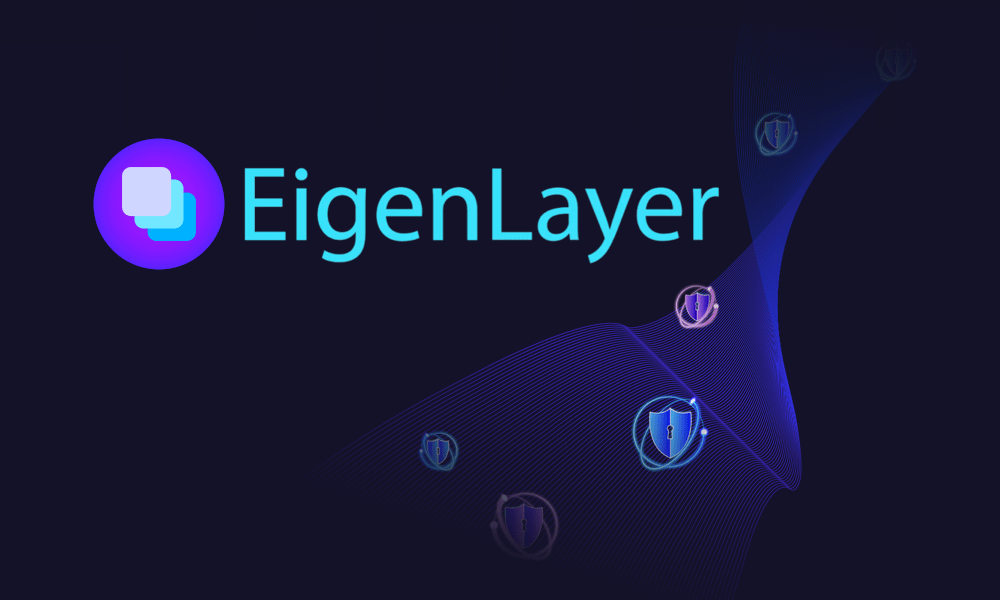
What Is EigenLayer?
In ELI5 terms, EigenLayer allows staked ETH to be rehypothecated, meaning you can stake ETH to secure Ethereum and stake it elsewhere (without unstaking). Protocols benefit from the security of the Ethereum blockchain because the staked collateral secures Ethereum and the protocol. The user benefits from double staking yield, one from Ethereum and one from the additional protocol secured.
This is a novel mechanism in crypto-economic security. Previously, it was not possible to secure more than one layer of trust with a single collateral. This restaking primitive overcomes the challenge of fractured trust across the Ethereum blockchain.
As with any innovation, new opportunities come with new risks. While you receive additional rewards in exchange for securing additional protocols, you also take on new slashing risks. EigenLayer is opt-in, meaning you choose whether you participate in securing additional protocols. These can introduce their own slashing conditions. The section about the risks of EigenLayer explains slashing risks (and other risk vectors) in detail.
What Problem Does EigenLayer Solve?
@Folifoxx explains how Ethereum was the first blockchain to introduce modular blockchain technology. However, this led to a decoupling of trust and innovation because the base layer (Ethereum) provides the trust but the protocols provide the innovation. Applications consume trust, while stakers and validators provide trust.
@Cookies uses a different analogy: Ethereum is a shopping mall and applications are the shops. The consensus mechanism is the lifts in the mall. Because there are not enough lifts to reach all shops (= the throughput is not high enough), shops have to build their own. This creates new problems.For instance, in the shopping mall analogy, there is a trust bottleneck because of the limited capacity of the lifts (= the consensus mechanism). Attacking the Ethereum network itself is rather costly because of the high total value locked (TVL) of stakers. But attacking an individual protocol is comparably easy, as the numerous hacks over the last years show. As Folifoxx puts it: the cost of corruption is much lower, the farther we are from the base layer.
The cost of capital is another hidden cost — if protocols need to incentivize a higher TVL via staking to be secured, the easiest way to pay for it is via token emissions.
In other words, decentralized applications (DApps) pay Ethereum a premium for the trust and security guarantees it provides. But that entails fragmentation of trust — particularly for DApps and bridges that do not use the Ethereum Virtual Machine (EVM) and are not compatible with the base layer.
The consequence is that middleware developers (oracles, bridges, anything that connects blockchain applications) carry the burden of bootstrapping costly new trust models. We’d be much better off if oracles and bridges did not have to worry about their security because it’s guaranteed by the Ethereum base layer. This situation dilutes Ethereum’s value proposition and slows down innovation. Moreover, interests across different blockchain networks are not aligned. Since there is no way for a DApp on Solana to tap into the Ethereum ecosystem, its developers can’t benefit from positive externalities like Ethereum users or developers.
The TLDR of problems:
- Innovation on the Ethereum base layer is unnecessarily slow.
- The reason is fragmented trust.
- Fragmented trust means applications and middleware have to focus on securing their protocols.
- That’s costly and diverts attention and capital.
- Protocols that are not EVM-compatible cannot benefit from EVM incentives.
What Is the Goal of EigenLayer?
Enter EigenLayer.
It is the mechanism to leverage an existing trust network, like the Ethereum blockchain, to achieve goals other than block production it was not primarily programmed to do.EigenLayer’s goal is to change the status quo and better align the interests of dApps, middleware services, and Ethereum.It leverages two ideas to do that: pooled security and free-market governance.
The next section explains how EigenLayer does that exactly.
The goal is for any protocol, even non-EVM-compatible protocols, to be able to use Ethereum’s security, thus making the system more efficient and robust.
What Are the Benefits of EigenLayer?
EigenLayer provides services to oracles and bridges, such as data availability on the same network. It has already launched a data availability layer for Ethereum called EigenDA. It enables cheaper and higher bandwidth for data availability than the Ethereum base layer: Ethereum currently processes 80 kilobytes per second, but EigenLayer will allow up to 15 megabytes per second. This EigenDA Data has a dual quorum of ETH and RocketPool stakers and combines slashing with no collusion amongst nodes. EigenLayer’s founder Sreeram Kannan highlighted that the expected throughput of EigenDA for the future will be 1 GB/s.
This results in better programmability on the Ethereum base layer and, as a consequence, a higher rate of development. When protocols interact with each other more quickly and easily, the rate of innovation rises. Since the marginal cost of staking is zero (it doesn’t cost anything to stake the same capital twice), the value proposition of Ethereum grows: protocols on Ethereum can be secured with the same capital stock that secures Ethereum. This should result in Ethereum attracting new capital to secure its base layer.
What Are the Use Cases of EigenLayer?
EigenLayer has multiple use cases. Here’s a list with links to highly technical explanations from EigenLayer’s founder Sreeram Kannan:
- MEV-Boost
- Data Availability layers
- Settlement infrastructure
- Secure multiparty computation
- Oracles
- Bridges and bridging hubs
- Single-slot finality
If you don’t understand most of this, don’t worry. You’re not alone.A simple way to explain good use cases of EigenLayer is that anything which does not run a big risk of frequent slashing is a good candidate. For instance, bridges or oracles fall in this category. They can be secured with more collateral and gain several orders of magnitude in security. Appchains (applications running on their own blockchains) is another good candidate. They can bootstrap security by relying on Ethereum’s security.
EigenLayer also allows projects to build sidechains directly aligned with Ethereum. These are secured by the base layer and their transactions can be included in the sidechains’ blocks before being settled on the mainnet.
What Are the Risks of EigenLayer?
With great power comes great responsibility. Or in crypto terms: with great yields comes greater risk.
EigenLayer inherits decentralized trust from a subset of validators (e.g. RocketPool), which create a decentralized set of stakers. The services using EigenLayer can dictate their own conditions as to which nodes (and which level of decentralization) they are satisfied with. Since EigenLayer introduces a great deal of efficiency, this comes with several risk vectors:
- Single point of failure: EigenLayer receives the withdrawal credentials from ETH stakers. If it is exploited and has a significant amount of ETH staked, this creates a systemic risk for the mainnet.
- Centralization risk: If many stakers secure one app and get slashed, that could have bad consequences for Ethereum.
- Yield risk: Protocols can leverage Ethereum for security. But stakers on EigenLayer may opt into the highest yields to maximize their returns, leading to a race to the top between protocols offering ever higher yields to attract capital.
- Slashing risk: Protocols could also lower their slashing conditions to attract more capital, thus undermining their own security.



















